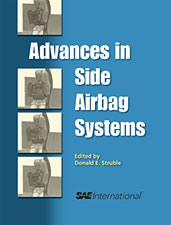Journal Article
Crush Energy and Stiffness in Side Impacts
2017-03-28
2016-32-0090
Crash tests of vehicles by striking deformable barriers are specified by Government programs such as FMVSS 214, FMVSS 301 and the Side Impact New Car Assessment Program (SINCAP). Such tests result in both crash partners absorbing crush energy and moving after separation. Compared with studying fixed rigid barrier crash tests, the analysis of the energy-absorbing behavior of the vehicle side (or rear) structure is much more involved. Described in this paper is a methodology by which analysts can use such crash tests to determine the side structure stiffness characteristics for the specific struck vehicle. Such vehicle-specific information allows the calculation of the crush energy for the particular side-struck vehicle during an actual collision – a key step in the reconstruction of that crash.

